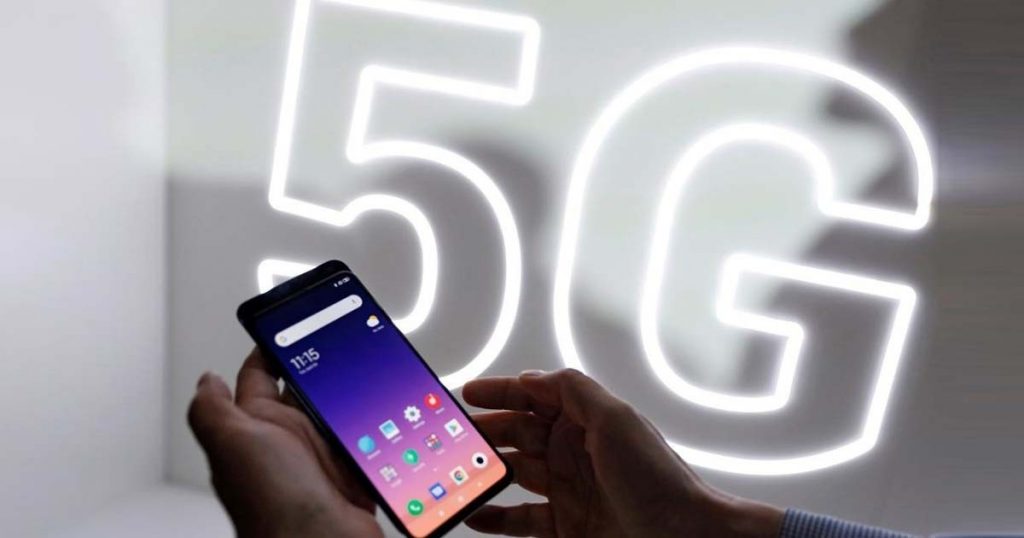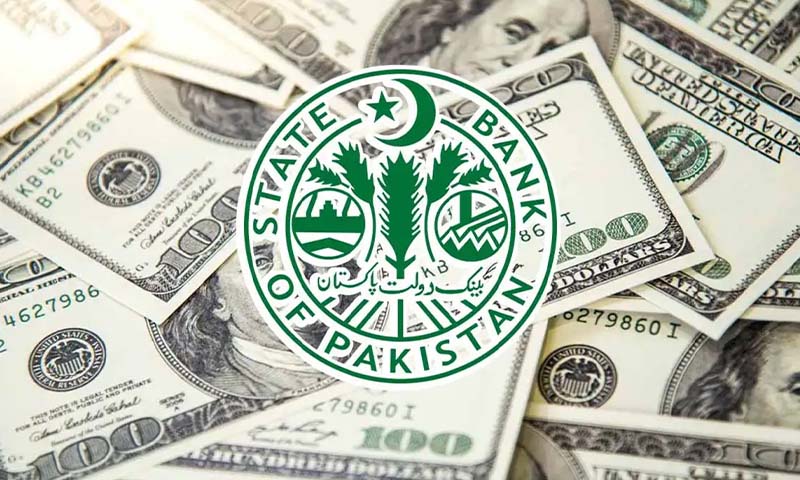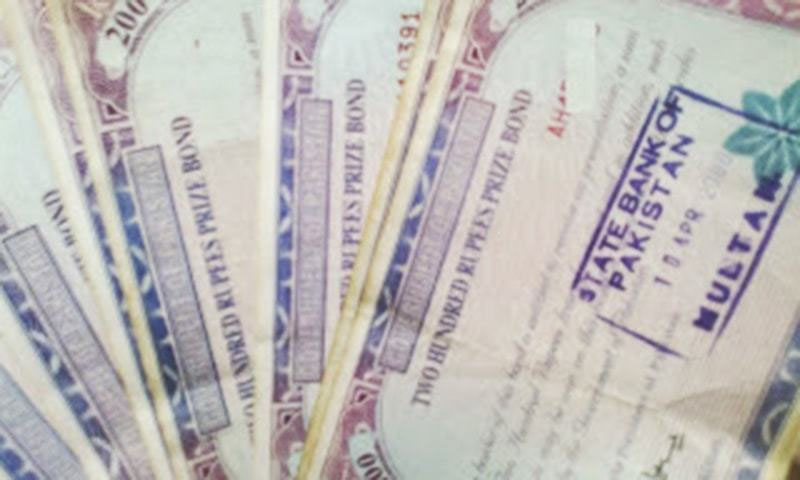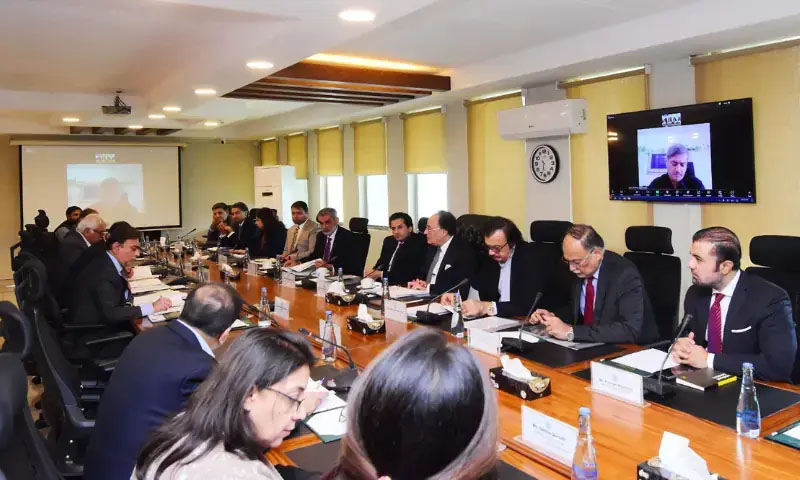- Web Desk
- Yesterday
Zongratulations? 5G rollout in ten months
-

- Syeda Masooma
- Sep 21, 2023

ISLAMABAD: In the fast-paced world of technology, Pakistan’s quest for 5G deployment has once again taken centre stage, with caretaker Minister for Information Technology & Telecom, Dr Umar Saif, unveiling an ambitious plan that has left many both intrigued and sceptical.
The plan, which promises to enable active spectrum sharing, requires forward-thinking taxation policies, and a need to implement regulations and incentives for the telecom industry to gear up for the imminent 5G auction in mere 10 months. It has ignited a fresh debate in the tech sphere.
While 5G in Pakistan has remained a topic limited to gossips and rumours in the past, this time the actions seem to be in line with the words. Saif’s recent meeting with Zong’s new CEO had 5G auction at the heart of the discussion. But the bigger question is whether the financial situation of Pakistani telcos allow them to participate in such a bid – Unless the goal is not to facilitate consumers, but rather pave a way for a single company to take charge.
MAKES SENSE?
On September 6, the minister said that Pakistan is going to launch 5G services in the country within ten months. While this may be a perfectly welcome development at first glance, a lot more needs to be unpacked before celebrations can begin.
“Pakistan is behind in 5G auctioning if you look at the neighbouring countries and elsewhere in the world. We believe this is as good as time as any [to launch 5G],” according to Telenor CEO Irfan Wahab Khan, who further said “the level of reserve prices currently in Pakistan in legacy bands is not viable”.
We have made recommendations to the government which is basically a reform agenda for the telecom sector.
Telenor CEO Irfan Wahab
Another heavyweight, Mobilink Jazz, is of the opinion that the current market is better served with a swift rollout of 4G across the country. “Presently, the true potential of 5G technology is better suited for advanced enterprise use cases, such as remote surgeries, industrial production management, autonomous logistics, and other cutting-edge systems, beyond its application in retail broadband access. While, almost half of our population is still offline,” Jazz CEO Aamir Ibrahim told HUM News English.
He added, “For most customers, what matters most is accessible, dependable, affordable, and high-speed internet. The distinction between 4G and 5G is not their primary concern”.
THE FLIP SIDE
Why Pakistan cannot have 5G within ten months and, more importantly, why it shouldn’t?
The simplest reason for this is that “it is too expensive”. From the license fee denominated in US Dollars to the equipment that needs to be imported and the infrastructure that needs to be in place for 5G to work, none exists in an affordable manner yet.
Above 51 per cent of mobile phones present in Pakistani market are manufactured by Chinese companies
Statcounter
There are five main telecom companies operating in the country, Ufone (PTCL), Jazz, Telenor and Zong, and Special Communication Organization (SCO) that takes care of the connectivity of Gilgit-Baltistan and Azad Jammu and Kashmir areas. SCO is too small to have a significant say in 5G auction in the country, although it has also conducted internal tests like the rest of the companies for 5G.
But its scale paired with the fact that it is military owned, there is a high probability it will not fiscally burden itself beyond its means. SCO is already very strict when it comes to site sharing with other companies – a favour they pay back, which further limits the scope of its network reach. Although nothing in Pakistan follows a straight logic these days but if they had to, it is unlikely that even if SCO chooses to establish itself among the main telcos by obtaining a 5G license, it will have a nation-wide infrastructure for a rollout.
Read: China’s Huawei may make comeback with 5G smartphones
“In Pakistan, per user monthly spending on telecom services is 70 cents (approx. Rs 200), in comparison to $2.5 in Bangladesh and $3 in India. In Europe and the US, this goes up to $30 and $40, respectively. With this kind of revenue generation capacity, combined with the telecom taxes highest in the region, the telecom companies are not in a position to carry out heavy spending, or massive investments like 5G auction, which is currently priced at $300 million,” former CEO of Universal Service Find (USF) Haaris M. Chaudhary told HUM News English. USF is a government established entity that assists the telecom companies in provision of services to the underserved and unserved areas. This is a sentiment echoed by Aamir Ibrahim of JAZZ.
“Building the infrastructure to support 5G requires significant capital investment, a challenge compounded by the current macroeconomic conditions and sector-specific hurdles. These challenges restrict the central bank’s ability to allocate foreign exchange for 5G equipment and handsets, which are also out of reach for many customers. Consequently, operators find it challenging to justify the business case for 5G, even if spectrum allocation were made free of charge”.
In June, the JAZZ CEO had expressed his opinions through a social media statement, saying “It is disappointing to see no relief extended to Pakistan’s 195 million telecom users in the budget, who continue to face the highest telecom taxes in the world. We cannot pursue our digital ambitions when Pakistanis bear a 34.5 per cent tax for using the Internet.” These taxes include 15 percent withholding tax (WHT) and 19.5 percent general sales tax (GST), as of June 2023.
Simple denomination of the license fee in USD in itself is a tangible impediment for the local telecom companies, making the actual transaction costs uncertain given the circumstances, and that is not the only significant expenditure.
Approximately $500 – $800 million more are needed to install the necessary infrastructure for 5G services to reach the end users, USF’s former CEO Haaris said.
“There is less than 1 per cent 5G handset penetration. The ecosystem building needs time and that should be done by relaxing rollout obligations,” said Telenor Pakistan CEO Irfan Wahab Khan.
“With almost half of our population still offline, including 20 per cent of Pakistanis living without any telecom coverage, the foremost challenge for us right now is to swiftly roll out a fast and robust 4G internet across the country”
Aamir Ibrahim, CEO JAZZ
Haaris said that low profits and higher taxes are also keeping international investors away from the Pakistan’s telecom sector. Secondly, at least for now, the capital Investment also remains low because of the currency pressures. “Telecom equipment is mostly imported and LCs Issue has created problems for it in the recent past”, said Haaris, “Maybe in ten months’ time, that the caretaker minister talks about, it might be resolved but for now that problem exists”.
THE OBSESSION WITH 5G ROLLOUT
One international player, Telenor, is already on its way out of the country. Pakistan Telecommunication Company Limited (PTCL) has already announced its board’s decision approving the acquisition of Telenor Pakistan.
With Telenor gone, and SCO being too small a player to capitalize on this opportunity to use 5G as a short cut to solidifying itself into Pakistan’s mainstream telecom players, Ufone, Jazz and Zong will have the playground.
UFONE
Ufone [Pak Telecom Mobile Limited] is a wholly owned subsidiary of PTCL, that is 62 percent government owned. PTCL might be more inclined to follow through with the government’s measures – even the hasty ones – if 5G launch actually does take place within ten months. However, it is imperative to note here that Ufone did not upgrade to 4G for over half a decade.
Till February 2019, Ufone’s stance was that if service quality is maintained at 3G speeds, it is sufficient enough for users in Pakistan. Can the same level of practicality be expected from them this time around? Time will tell.
TELENOR
From the outlook, the company is not willing to jump into 5G auction wholeheartedly unless, at least, some of the conditions are changed. Telenor CEO, speaking to Hum News said that their level of participation in the spectrum auction depends entirely on the terms and conditions of the auction.
“Firstly, it is imperative to do a pricing reset for 5G. The level of reserve prices currently in Pakistan in legacy bands is not viable. Secondly, Spectrum cannot be priced in USD,” he said while adding that “most countries auction spectrum in sovereign currencies, a practice that needs to be followed by Pakistan”.
Adding two more points he further said, “there should be flexibility in terms of duration. 15 years is a long time and requires flexibility based on operator business case. Lastly, payment terms should be based on ten, free-of-interest equal instalments, instead of 50 percent upfront payment”.
JAZZ
Mobilink Jazz also gave a comprehensive answer to why a 5G auction in current conditions is not a smart idea.
Aamir Ibrahim said, “Participating in a spectrum auction, buying spectrum, and then facing challenges in acquiring the necessary devices and equipment for network rollout are counterproductive. This situation became evident after the last spectrum auction in late 2021. Within months, withholding tax on essential telecom and internet services were increased from 10 per cent to 15 per cent, and later in the year, handset imports were restricted”.
He said, “Our priority should be to address the concerns raised by the telecom sector to avert the digital emergency due to an alarming surge in business costs, largely stemming from the regressive policy of pegging telecom spectrum prices to the US dollar. Once we’ve tackled these pressing issues, we can explore next-generation technologies”.
ZONG
Even by simple deduction, it is the China-operated Zong then, that remains the only player in the market willing and capable of participating in the auction. With a cash-rich parent company, enough un-deteriorated dollars to spend in the Pakistani market, and greater strategic goals, it might very well be able to lead the 5G revolution in the country.
“Pakistan is a strategic partner for China. Our focus is to develop a sustainable 4G ecosystem, which will be an important piece of the puzzle for connecting multiple projects of CPEC across Pakistan. Profits will follow,”
Director Strategy of ZONG Maham Naeem to Profit in 2018, outlining the company’s strategic vision in the country
Furthermore, over 51 per cent share of Pakistan’s mobile phone market is being operated by Chinese companies, according to data gathered by Statcounter (Vivo 13.6 percent, Oppo 13.26 percent, Infinix 14.38 percent, Huawei 5.91 percent, Realme 3.72 percent, OnePlus 0.71 percent among others).
There is a likelihood of synergies between the mobile manufacturers to fill Pakistan’s market with low-cost 5G enabled phones in case of a Chinese telco benefiting from the process.
ZONG’s plans, at the moment, might be shrouded in secrecy – and their reply to HUM News English was fairly simple when we reached out for comments: “Sorry we won’t be able to comment.”
Should the interim minister still choose to rollout 5G, the only thing we can say to him is, Zongratulations. But keeping the rules of business in mind, will it be possible for the state to hold a bidding process for a single service provider if it comes to that?




